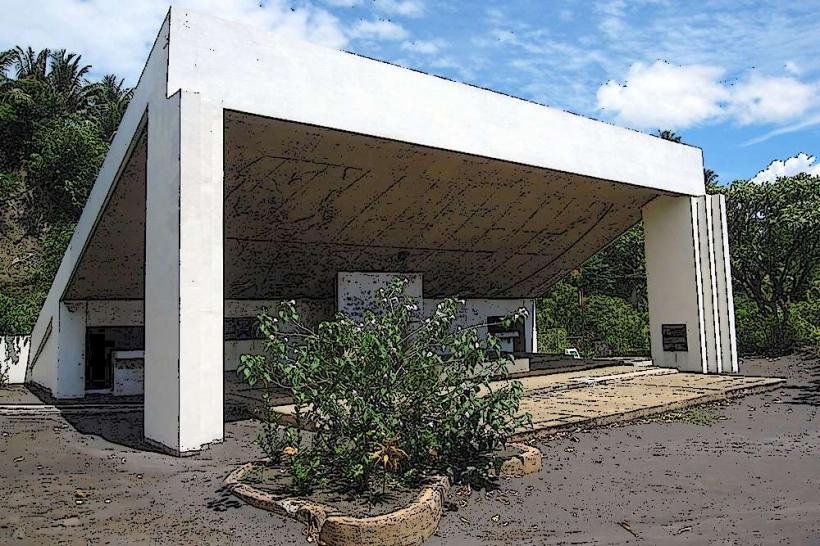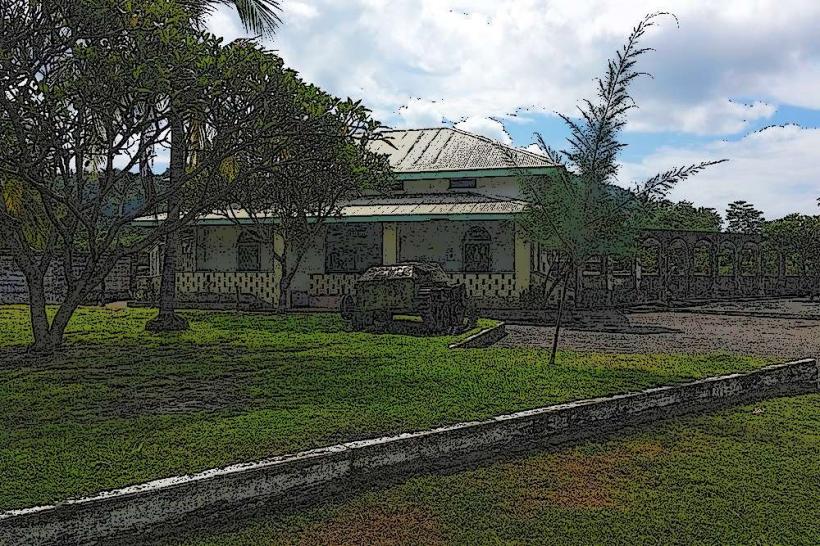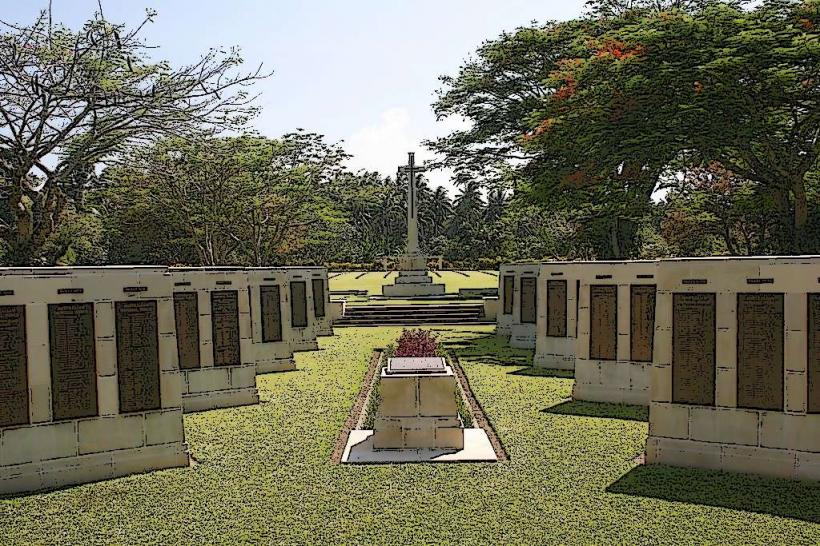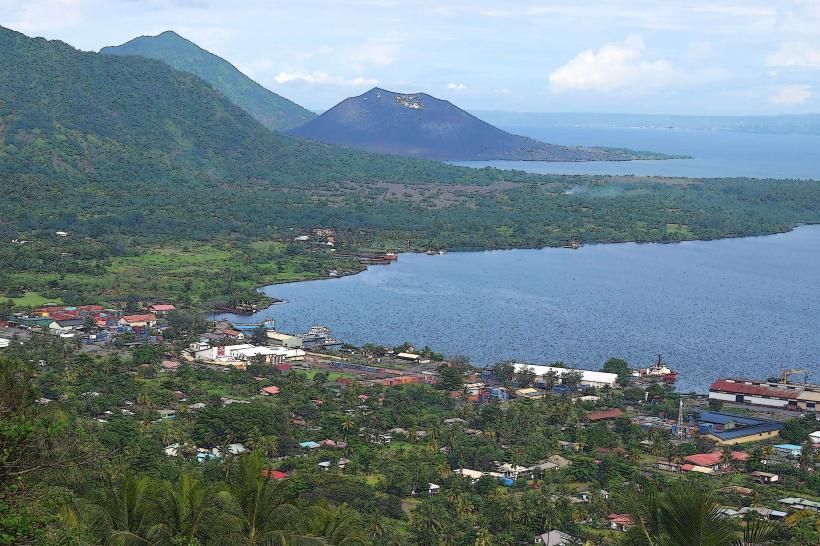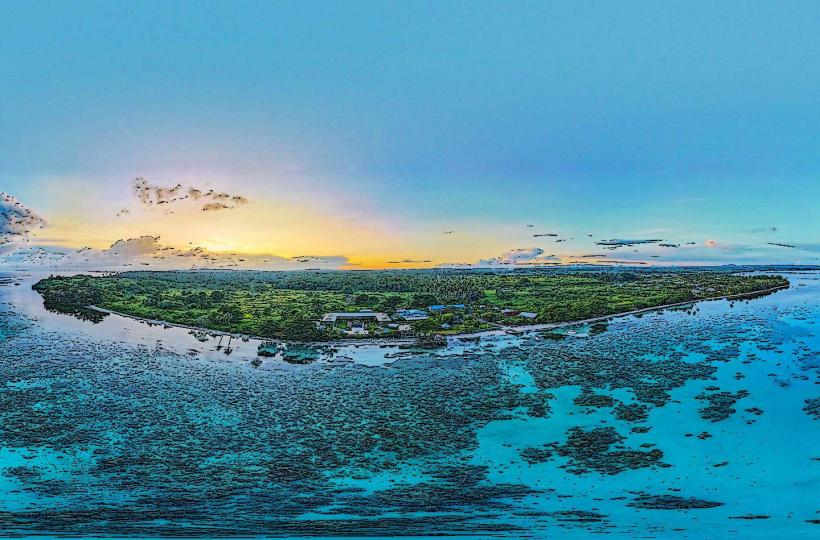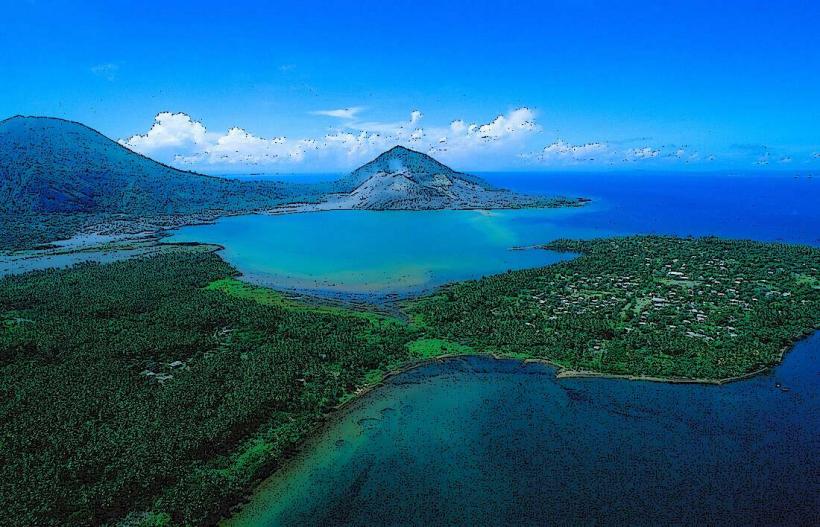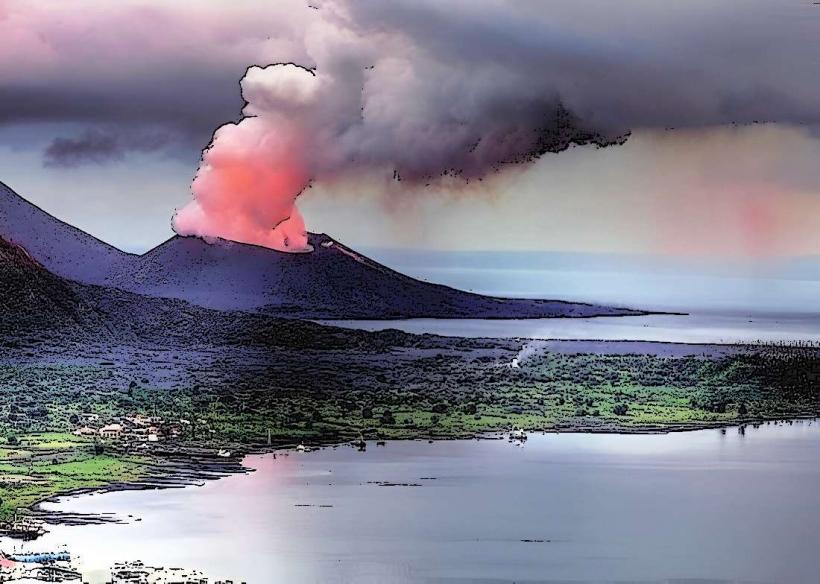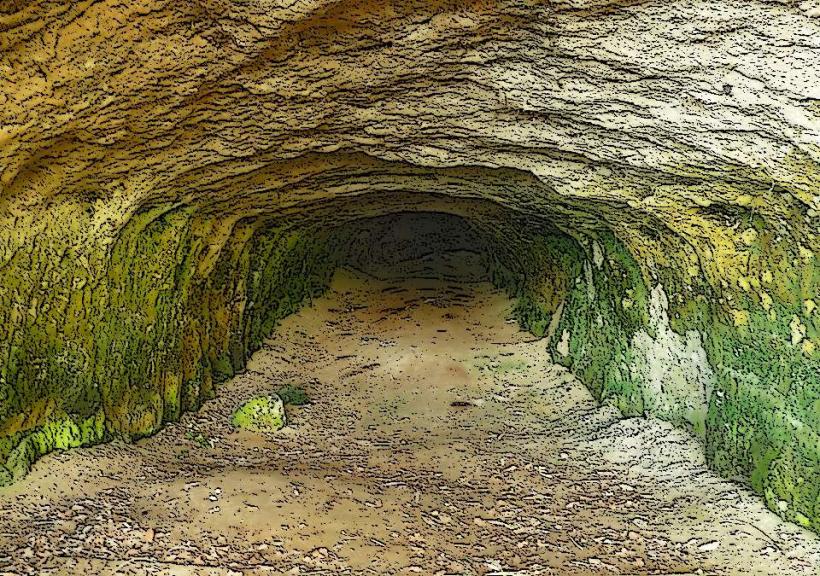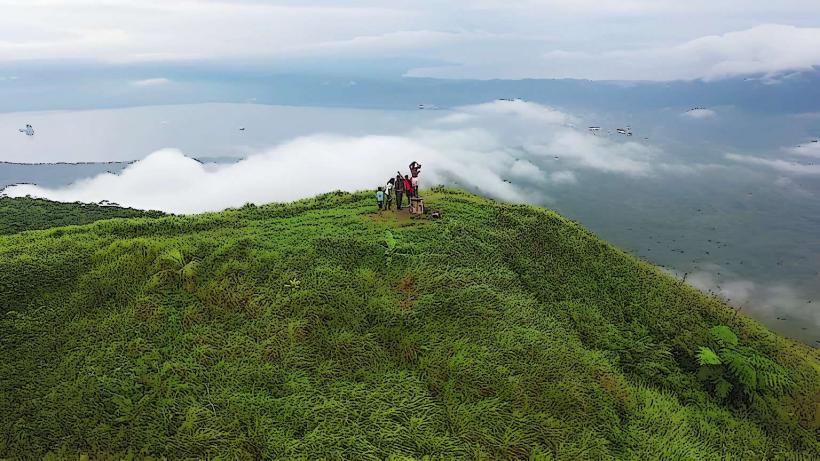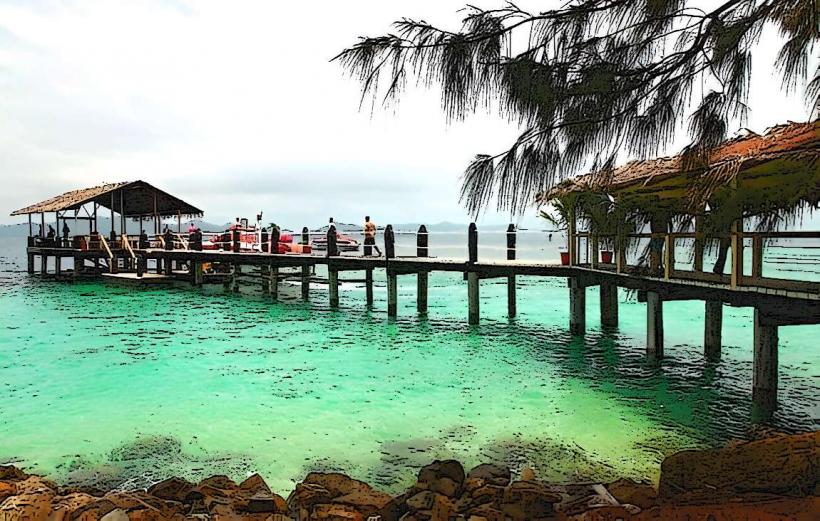Information
Landmark: Rabaul Volcano ObservatoryCity: Rabaul
Country: Papua New Guinea
Continent: Australia
The Rabaul Volcano Observatory (RVO) is a significant scientific facility located in Rabaul, a town on the Gazelle Peninsula in the East New Britain Province of Papua New Guinea. The observatory plays a critical role in monitoring and studying volcanic activity in the region, particularly focusing on the Rabaul caldera and its associated volcanoes, which are among the most active in the Pacific.
Key Features of the Rabaul Volcano Observatory:
Location and Importance:
- The Rabaul Volcano Observatory is situated in close proximity to the Rabaul caldera, a massive volcanic complex that contains several active volcanoes, including Tavurvur, Rabaul, and Pompei.
- Rabaul is known for its historical volcanic activity, with major eruptions occurring in the past that significantly impacted the town and the surrounding areas. The observatory's location provides scientists with an ideal vantage point to monitor volcanic behavior in real time.
Monitoring and Research:
- The primary function of the observatory is to monitor volcanic activity in the region, using various methods such as seismic sensors, thermal cameras, gas sampling, and remote sensing. These tools help track changes in volcanic behavior and provide early warnings to local communities of potential eruptions.
- The observatory conducts ongoing research to better understand the volcanic hazards of the region, including lava flows, pyroclastic flows, ash clouds, and earthquakes. RVO data is critical for assessing the risk to the surrounding communities and helping with evacuation and disaster response planning.
Rabaul Caldera:
- The Rabaul caldera is one of the world’s largest volcanic craters, formed by a massive eruption around 1400 years ago. It covers an area of approximately 30 kilometers in diameter and contains multiple active volcanoes, the most notable of which are Tavurvur, which erupted dramatically in 1994, and Rabaul.
- The caldera is home to a dense network of geothermal systems and hot springs, and its volcanic activity significantly impacts both the local environment and the community.
- The 1994 eruption of Tavurvur, in particular, caused major damage to Rabaul town, including the destruction of infrastructure and the displacement of thousands of people. The eruption serves as a reminder of the ongoing threat posed by the active volcanoes in the region.
Eruption Forecasting and Risk Mitigation:
- The observatory is involved in volcanic hazard assessment and provides early warning systems to local authorities, communities, and tourists. This helps reduce the risks associated with volcanic eruptions, which can be deadly and cause significant damage to life and property.
- RVO collaborates with Papua New Guinea’s National Disaster Centre and other international geological organizations to improve volcanic eruption forecasting and to raise awareness about volcanic risks. Public safety campaigns and community engagement programs are also part of their efforts to prepare local populations for potential volcanic events.
Scientific Contributions and Education:
- The Rabaul Volcano Observatory has contributed significantly to the scientific understanding of volcanic processes and seismic activity. Researchers and volcanologists from around the world visit the facility to study the region’s volcanoes, and the data collected by the observatory is shared internationally.
- The observatory also serves as a hub for scientific education and training in volcanology, providing resources for local students and professionals interested in the study of volcanic hazards. Additionally, it offers information to the general public about volcanic activity in the region through public outreach programs and educational materials.
Tourism and Public Access:
- Although the primary purpose of the observatory is scientific research, it also plays a role in volcanic tourism. Visitors to Rabaul can learn about the region's volcanic activity and the work of the observatory through exhibits, information panels, and guided tours. The observatory offers a unique perspective on the region's geology and volcanic history, making it a valuable destination for tourists interested in natural sciences.
- The observatory's proximity to the Tavurvur volcano and other volcanic sites makes it a popular stop for those visiting the area. Tourists can observe volcanic activity and enjoy breathtaking views of the caldera and surrounding areas.
Post-1994 Eruption Recovery:
- After the 1994 eruption of Tavurvur, the Rabaul Volcano Observatory was integral to the recovery process by providing critical data and warnings to aid in disaster response. The eruption significantly altered the landscape of Rabaul, and rebuilding efforts have continued over the years with an emphasis on reducing volcanic risks and improving resilience in the face of future eruptions.
- The observatory continues to monitor post-eruption volcanic activity, including monitoring the area for any signs of renewed eruptions and volcanic tremors. Its research into volcanic gases and ground deformation helps to provide accurate predictions of future eruptions.
Collaborations and International Partnerships:
- The Rabaul Volcano Observatory collaborates with various international organizations, including Geoscience Australia, USGS, and other volcanological institutions around the world. These partnerships facilitate data sharing and joint research initiatives, ensuring that the scientific community is well-equipped to understand and mitigate volcanic risks in the region.
- The observatory also works with local authorities and communities to implement effective disaster preparedness programs, including the development of evacuation plans and volcanic risk reduction strategies.
Conclusion:
The Rabaul Volcano Observatory plays a crucial role in volcanic monitoring, research, and disaster preparedness in one of the most volcanically active regions in the world. Its work is vital for understanding the dynamic volcanic systems of the Rabaul caldera and provides essential information to help mitigate the risks associated with volcanic eruptions. The observatory’s contributions to scientific research, community safety, and educational outreach make it a valuable resource for both local populations and international visitors.

